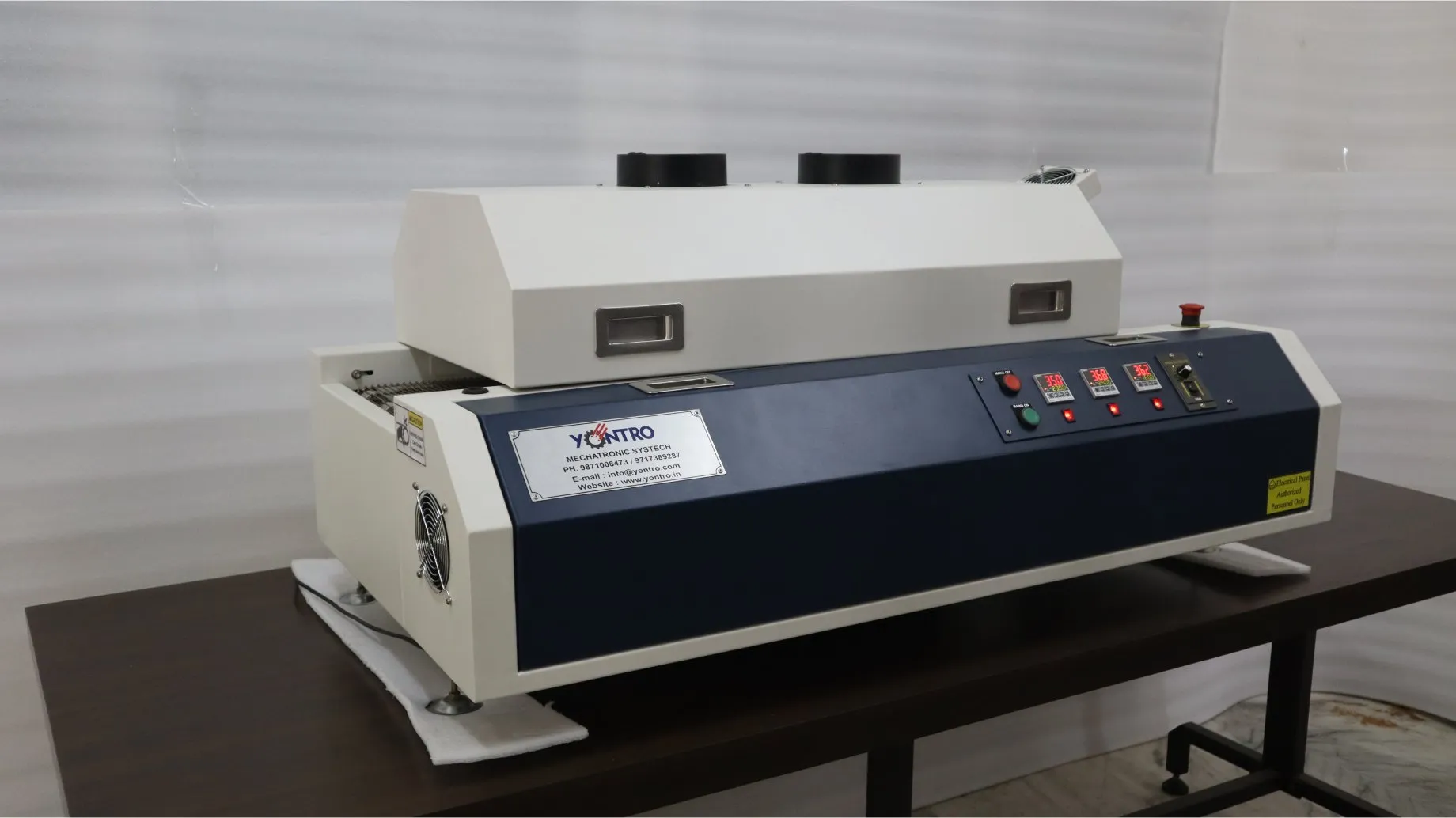In the dynamic world of electronics manufacturing, precision, reliability, and efficiency are paramount. Reflow soldering machines have emerged as indispensable tools in the assembly of electronic components onto printed circuit boards (PCBs), revolutionizing the soldering process and ensuring high-quality, reliable products. In this blog, we’ll delve into the intricacies of soldering machines, their functionalities, benefits, and impact on the electronics industry.
Understanding Reflow Soldering
Reflow soldering is a process used to create reliable electrical connections between electronic components and PCBs. It involves heating solder paste to a specific temperature, allowing it to melt and form solder joints between components and PCB pads. Reflow soldering machines automate this process, providing precise control over temperature profiles, heating zones, and soldering parameters.
Key Components and Functionality
- Conveyor System: Reflow soldering machines feature a conveyor system that transports PCBs through various stages of the soldering process. This conveyor system ensures consistent and uniform heating of PCBs, optimizing soldering quality.
- Heating Zones: Reflow soldering machines typically have multiple heating zones, including preheating, soaking, and reflow zones. Each zone is carefully controlled to achieve the desired temperature profile for solder paste activation, component soldering, and cooling.
- Temperature Control: Precise temperature control is critical in reflow soldering. Reflow soldering machines utilize advanced heating elements, sensors, and closed-loop feedback systems to maintain accurate and stable temperatures throughout the soldering process.
- Solder Paste Application: Before reflow soldering, solder paste is applied to PCB pads using stencil printing or dispensing techniques. The solder paste contains flux and solder particles, which melt during reflow to form solder joints.
- Cooling System: After soldering, PCBs undergo a cooling process to solidify solder joints and prevent component damage. Reflow soldering machines may include cooling zones or external cooling systems to expedite the cooling process and ensure product integrity.
Benefits of Reflow Soldering Machines
- High Precision: Reflow soldering machines offer precise control over soldering parameters, resulting in consistent solder joint quality and electrical connectivity.
- Efficiency: Automated reflow soldering processes significantly reduce manual labor, increase throughput, and improve overall production efficiency.
- Quality Assurance: Reflow soldering machines ensure uniform heating and controlled cooling, minimizing defects such as solder bridges, voids, and cold joints, leading to higher product reliability.
- Versatility: Reflow soldering machines can accommodate various PCB sizes, component types, and soldering requirements, making them suitable for a wide range of electronic assemblies.
- Cost-Effectiveness: While initial investment costs may be higher, reflow soldering machines offer long-term cost savings through improved quality, reduced rework, and increased productivity.
Impact on the Electronics Industry
Reflow soldering machines have had a profound impact on the electronics industry:
- Accelerated Production: Faster soldering cycles and higher throughput rates enable manufacturers to meet demand and reduce time-to-market for electronic products.
- Improved Quality Control: Precise temperature control and automated processes minimize soldering defects, ensuring high-quality, reliable electronic assemblies.
- Enhanced Productivity: Automation and efficiency improvements in soldering processes lead to increased productivity, resource optimization, and cost savings.
- Technological Advancements: Continuous innovation in reflow soldering technology, such as lead-free soldering and nitrogen atmosphere systems, drives advancements in electronics manufacturing.
Future Trends and Developments
The evolution of reflow soldering machines continues with ongoing advancements:
- Lead-Free Soldering: Compliance with environmental regulations and the transition to lead-free soldering materials for eco-friendly manufacturing.
- Miniaturization: Reflow soldering machines capable of handling smaller components, finer pitch requirements, and higher-density PCB assemblies.
- Smart Manufacturing: Integration with Industry 4.0 technologies, such as IoT (Internet of Things), data analytics, and predictive maintenance, for smart and connected manufacturing environments.
In conclusion, reflow soldering machines have become indispensable tools in electronics manufacturing, enabling precision, efficiency, and reliability in soldering processes. As the electronics industry evolves, these machines will continue to play a vital role in producing high-quality electronic products for various applications.

